Discover the Boyne Valley: In Ireland’s County Meath
In Ireland’s Ancient East a mystical region steeped in myth, legend, and archaeological wonders lies the Boyne Valley. From ancient passage tombs, historic monuments, medieval castles and scenic landscapes, the Boyne Valley route offers visitors a captivating journey through Ireland’s historic heart.
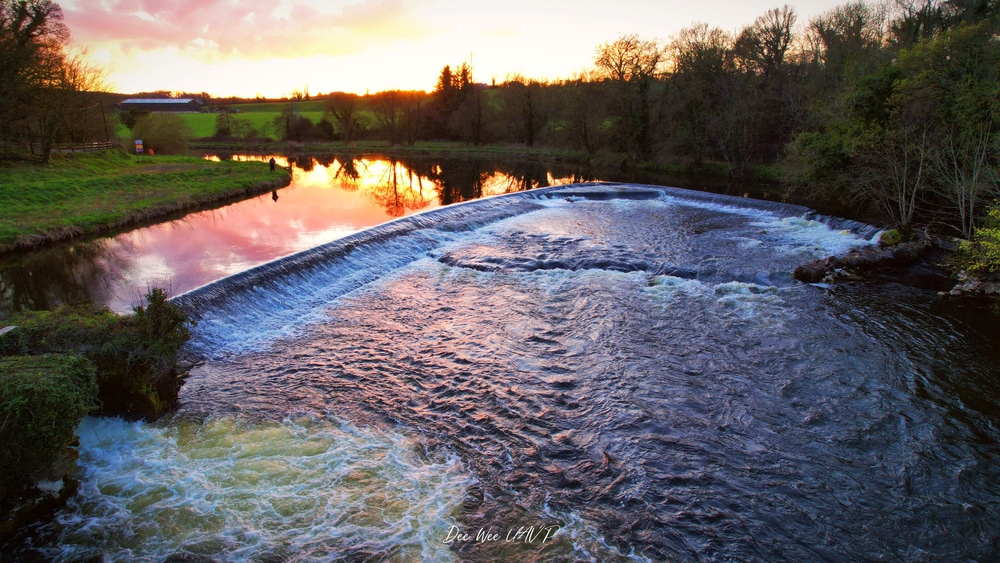
Encompassing County Meath and south Co Louth, the Boyne Valley is a unique destination with an abundance of things to do and lots of family activities and the the perfect place to explore Irish history.
Boyne Valley map
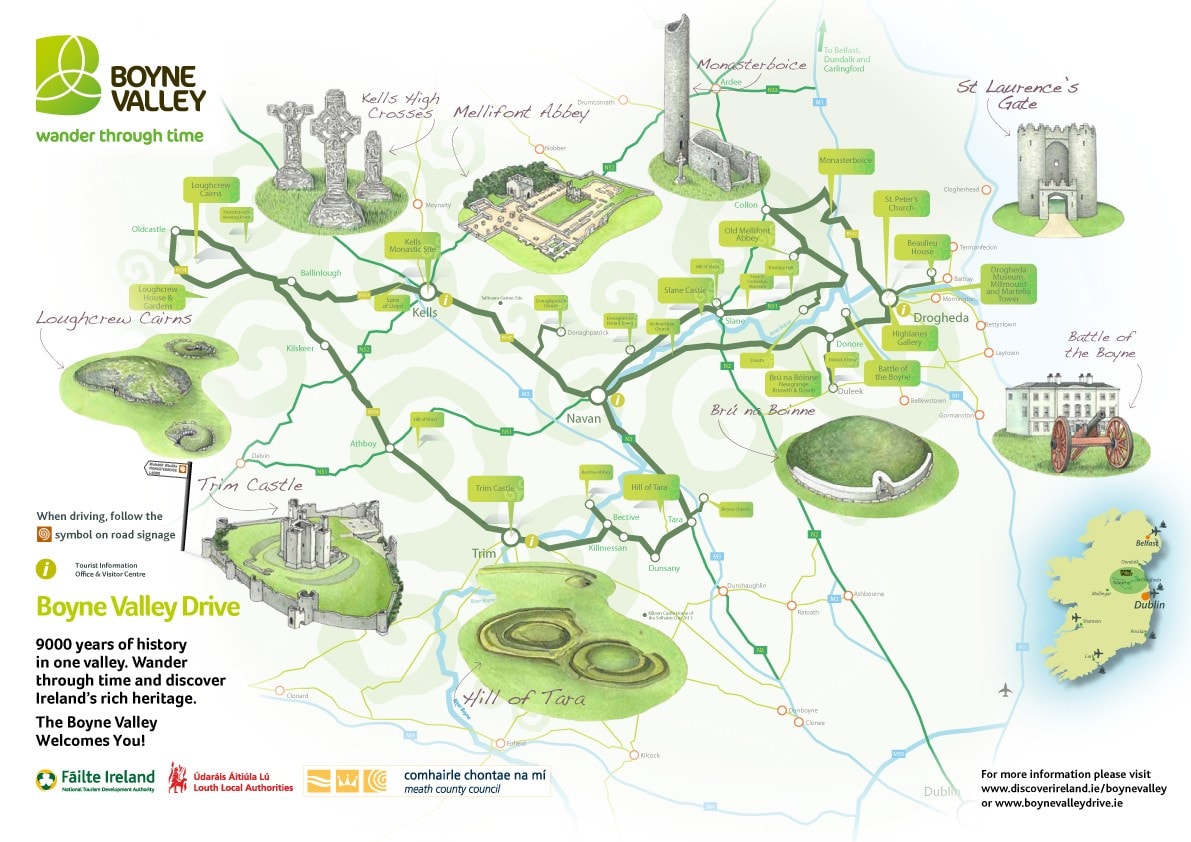
Getting to the Boyne Valley from Dublin and Belfast
The Boyne Valley is located in the North East of Ireland which is the birthplace of Ireland’s Ancient East just 20 minutes north of Dublin International airport or 1 and a half hours south of Belfast International airport.
From Dublin
Rail
The Boyne Valley is linked by rail via the Dublin-Belfast line through Drogheda (and Laytown and Gormanston), the M3 Parkway-Dublin line (via Dunboyne) and in the south at Enfield (on the Dublin to Sligo line). For timetables and fares see Irishrail.ie
Bus
A number of bus routes operate through Meath and Louth, linking the main towns such as the 109 (Dublin to Cavan via Navan and Kells), the 111 (Dublin to Athboy via Trim) and the 190 (Trim to Drogheda via Navan and Slane).
NB: Bus Eireann operates a bus service (Route 163) between the Brú na Bóinne Visitor Centre and Drogheda, via the Battle of the Boyne site at Oldbridge House. See all national bus information see buseireann.ie.
Local Link operates a number of bus routes in Meath (including Ashbourne, Longwood, Trim, Navan and Athboy), Louth (including Drogheda, Clogherhead, Annagassassan and Monasterboice) and Fingal. See website for details.
From Belfast
The drive to the Boyne Valley from Belfast will take around 90 minutes if you have rented a car. Since the Boyne Valley is just north of Dublin if you don’t fancy renting a car grab a train to Dublin and take a tour from there.
- Discover the Boyne Valley: In Ireland's County Meath
Xyuandbeyond is reader-supported. When you buy through links on our site, we may earn an affiliate commission. You can read my privacy policy here.
Frequently Asked Questions – Discover the Boyne Valley
What is the Boyne Valley?
The Boyne Valley is a region in county Meath, Ireland, known for its rich historical and archaeological significance. It is home to iconic sites such as the tomb of Newgrange, Knowth, and the Hill of Tara.
Why is the Boyne Valley famous?
The Boyne Valley is famous for its ancient monuments, including Newgrange and Knowth UNESCO World Heritage Sites. It is also associated with the High Kings of Ireland and has a wealth of historical and cultural attractions.
What are some must-visit attractions in the Boyne Valley?
When exploring the Boyne Valley, be sure to visit Newgrange, Knowth, the Hill of Tara, Trim Castle, Mellifont Abbey, and the Brú na Bóinne Visitor Centre for a comprehensive experience of the region’s history and heritage.
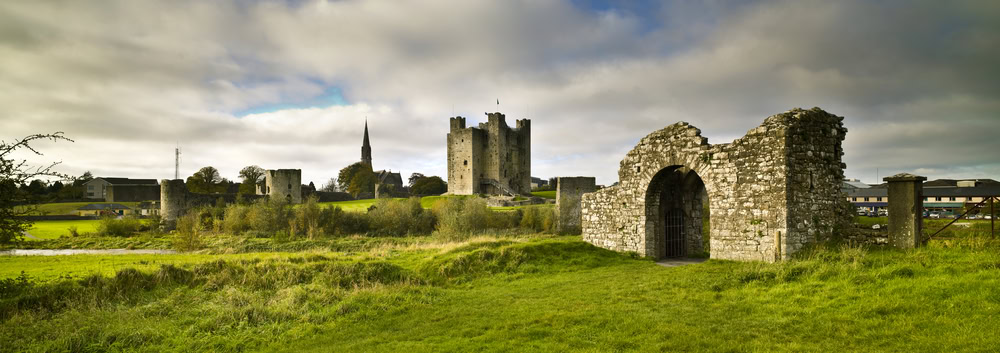
How far is the Boyne Valley from Dublin?
The Boyne Valley is located just a short drive away from Dublin, making it an ideal day trip destination for those visiting the capital city. It is approximately an hour’s drive from Dublin to the heart of the Boyne Valley.
What is the significance of the winter solstice at Newgrange?
The winter solstice at Newgrange is a phenomenon where the rising sun aligns with the passage tomb’s entrance, illuminating its inner chamber. This event has profound astronomical and cultural significance, highlighting the advanced knowledge of the ancient inhabitants of the Boyne Valley.
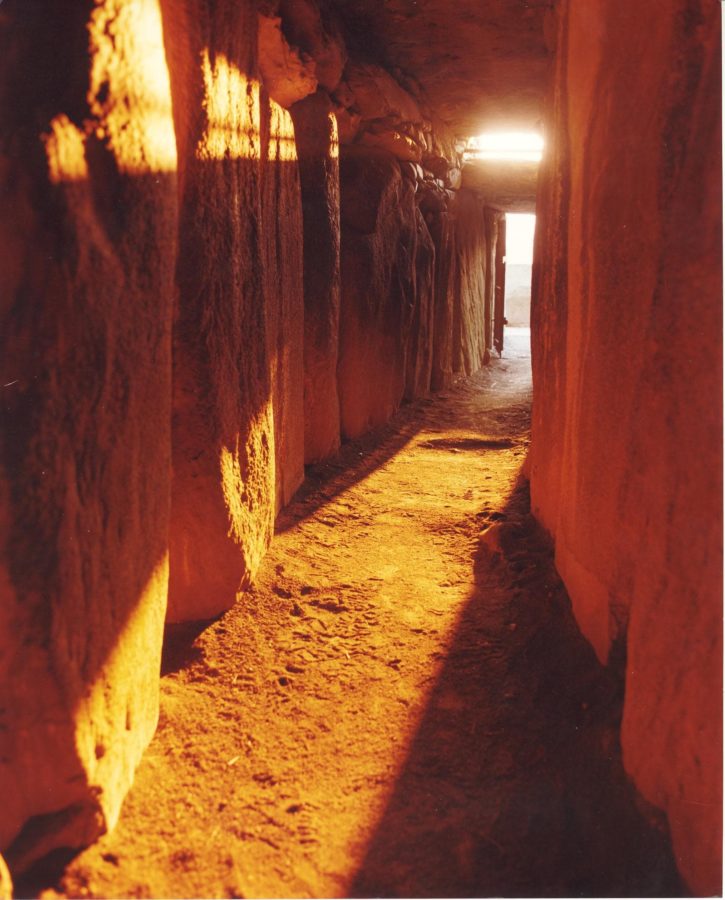
Are there tours available to explore the Boyne Valley?
Yes, there are various tours and guided experiences that offer in-depth exploration of the Boyne Valley, providing insights into its history, archaeology, and folklore. Visitors can opt for tours that include visits to key sites such as Newgrange, Knowth, and the Hill of Tara.
Boyne Valley highlights
Boyne River
Flowing through the enchanting landscapes of Ireland, the Boyne River weaves its way through history, myth, and natural beauty. Originating in County Kildare, this majestic river meanders for approximately 112 kilometers before reaching the Irish Sea at Drogheda.
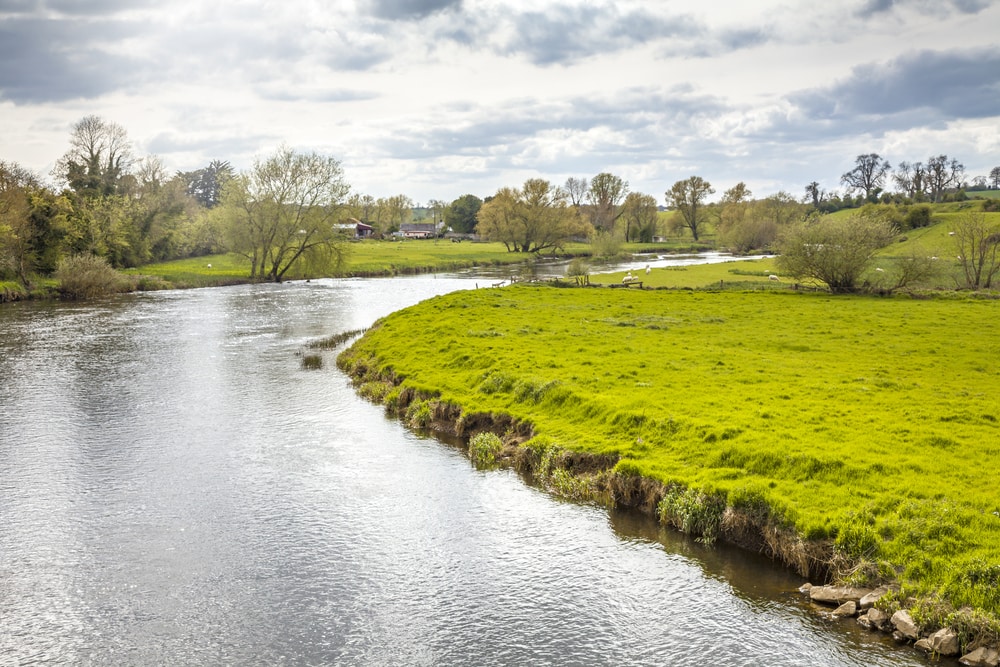
The Boyne River is not just a source of stunning scenery; it holds a significant place in Irish history, most notably for the Battle of the Boyne in 1690.
The Legendary Battle of the Boyne
The Battle of the Boyne, was fought on July 1, 1690, near the River Boyne in Ireland, and holds immense historical and symbolic significance. It was a battle between the forces of King William III of England and his father-in-law, King James II, who sought to regain the British throne. The battle marked a critical moment in Irish and British history, shaping the future of both nations.
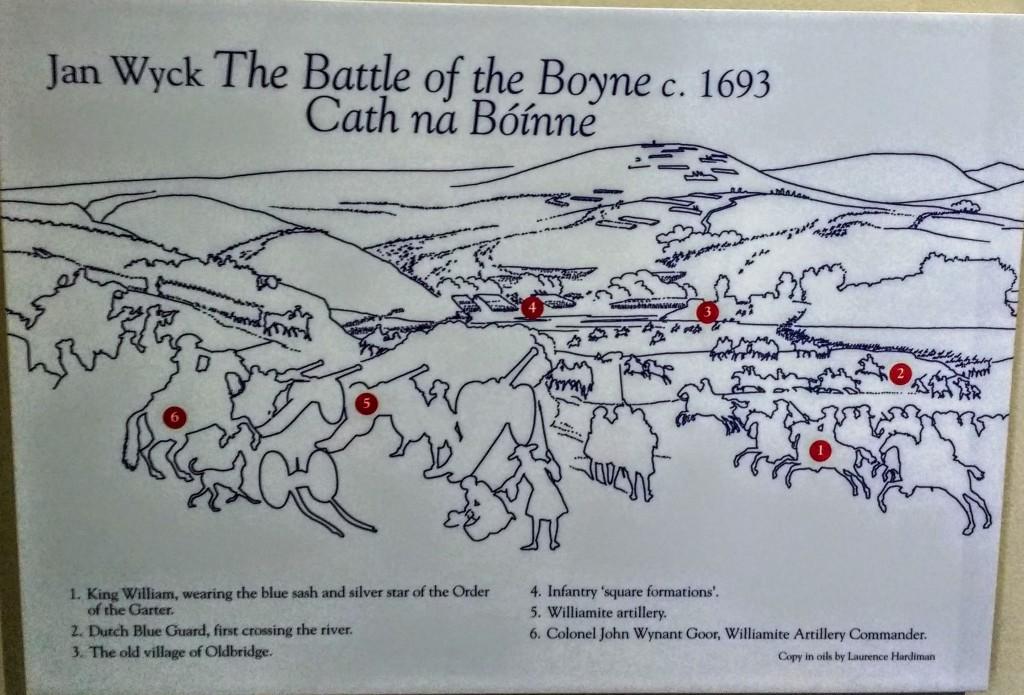
At the heart of the conflict was the struggle for power between Protestantism and Catholicism. King William III, a Protestant, led an army primarily composed of Protestant supporters known as Williamites, while King James II, a Catholic, commanded an army made up of Irish and French troops, known as Jacobites. The battle represented a larger European conflict, with William’s victory seen as a triumph for Protestantism and constitutional monarchy.
The battle took place on the banks of the River Boyne, near the town of Drogheda in present-day County Meath, Ireland. William’s forces crossed the river in an attempt to confront James and his troops. The battle itself was fierce and fast-paced, with cavalry charges and intense exchanges of musket fire. Despite initial setbacks and a brave resistance from the Jacobite forces, William’s superior military strategy and the support of his seasoned Dutch troops eventually led to a decisive victory.
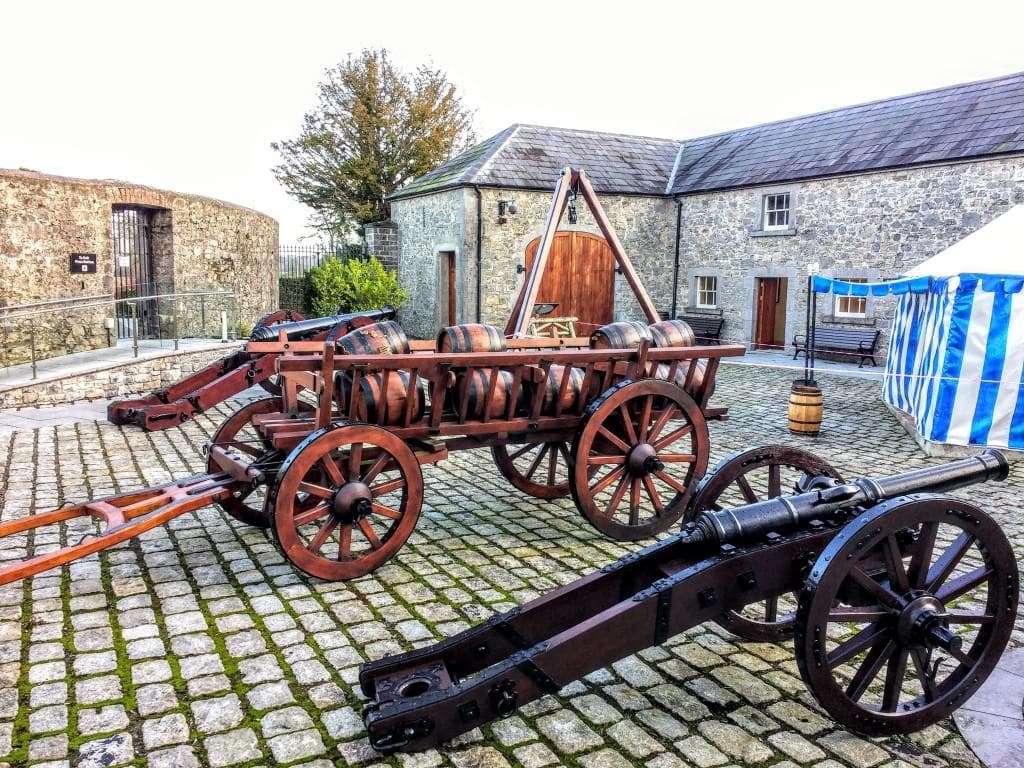
The outcome of the Battle of the Boyne had significant consequences. It firmly established Protestant dominance in Ireland and had a lasting impact on the relationship between Ireland and Britain, further cementing the division between the two nations and intensifying religious and political tensions.
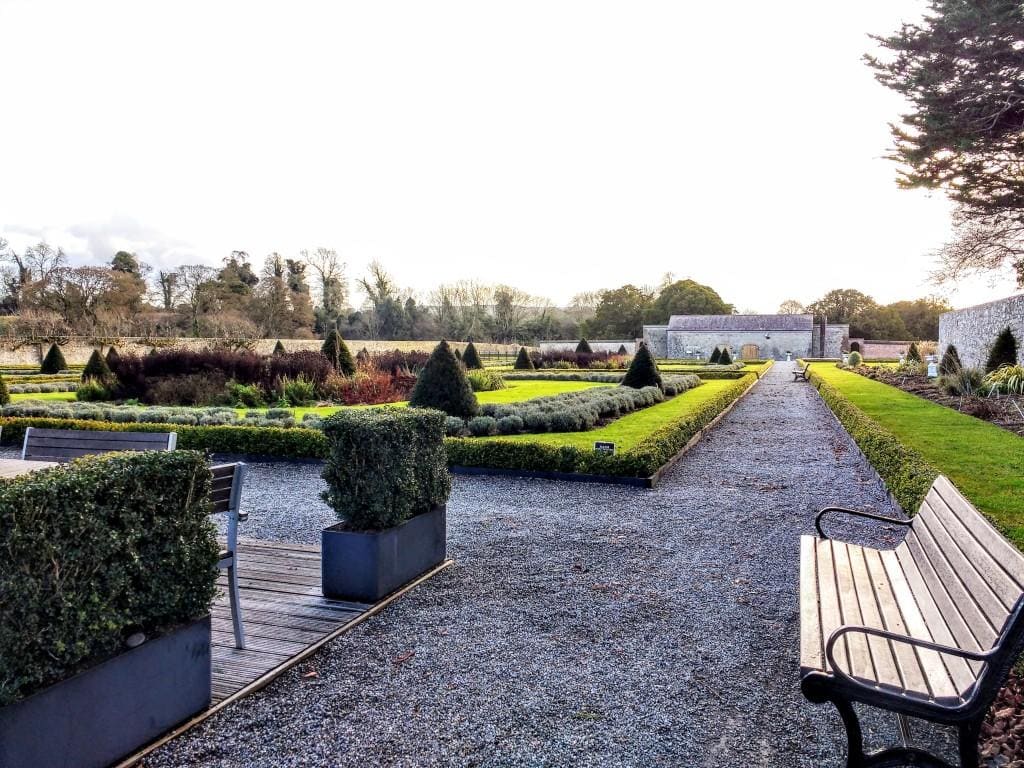
Today, the Battle of the Boyne remains deeply embedded in Irish history and is commemorated annually on July 12th by Protestant communities in Northern Ireland. The battle’s legacy, however, is complex, as it continues to be a source of differing interpretations and emotions for both communities on the island. The battlefield and surrounding area serve as a poignant reminder of the struggles, divisions, and aspirations that have shaped Ireland’s past and present.
The Royal Canal Greenway
The Royal Canal Greenway follows the path of the canal from Dublin to the River Shannon. Running 1.9km from Dominic’s Park on the south bank of the River Boyne near the Bridge of Peace in Drogheda, the Boyne Greenway takes you along the river close to the Mary McAleese Cable Bridge and then along the Boyne Canal to the Battle of the Boyne Visitor Centre at Oldbridge.
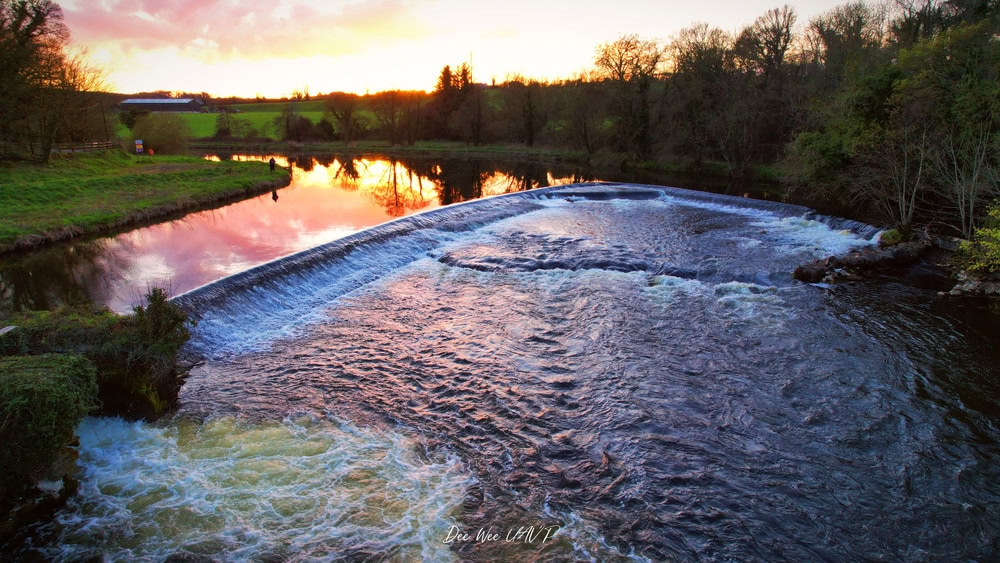
Boyne Blueway
Centred around the picturesque heritage town of Trim, the Boyne Blueway is a beautiful stretch of River Boyne from Trim to Bective Mill. With a length of 8kms it can be paddled in 2.5 to 3 hours to suit beginners and intermediates.
This summer, enjoy the Boyne from a different perspective
Prehistoric Sites
At the heart of the Boyne Valley lies a collection of awe-inspiring passage tombs, most notably the UNESCO World Heritage Site of Brú na Bóinne. Here, the mystical Newgrange, Knowth, and Dowth tombs stand as testament to the advanced engineering and astronomical knowledge of Ireland’s Neolithic inhabitants, dating back over 5,000 years. Exploring the intricate stone carvings and stepping into the chamber of Newgrange, where the winter solstice sunrise illuminates the sacred space, is a truly unforgettable experience.
Newgrange – Brú na Bóinne
Older than the pyramids the iconic passage grave Newgrange is a Stone Age (Neolithic) monument in the Boyne Valley, County Meath, it is the jewel in the crown of Ireland’s Ancient East and a UNESCO World Heritage Site.
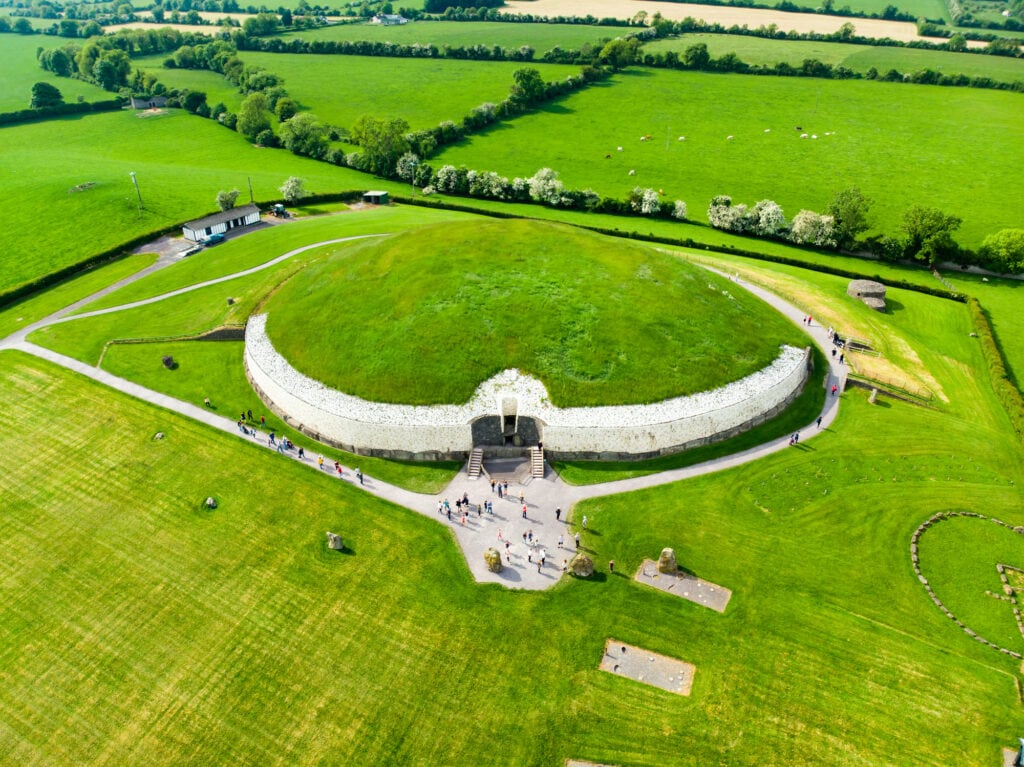
Newgrange is a Neolithic monument that was constructed about 5,200 years ago (3,200 B.C.) which makes it older than Stonehenge and the Great Pyramids of Giza. Newgrange is a large circular mound 85 meters (93 yards) in diameter and 13.5 meters (15 yards) high with a 19-meter (21 yards) stone passageway and chambers inside. The burial chamber mound is ringed by 97 large curbstones a stone circle, some of which are engraved with symbols of megalithic art.
Of the three main passage tombs in the Boyne Valley, Newgrange, Knowth and Dowth, the Newgrange megalith has always attracted the most attention. Little did anyone know that the passage tomb held a secret that was not revealed for many years.
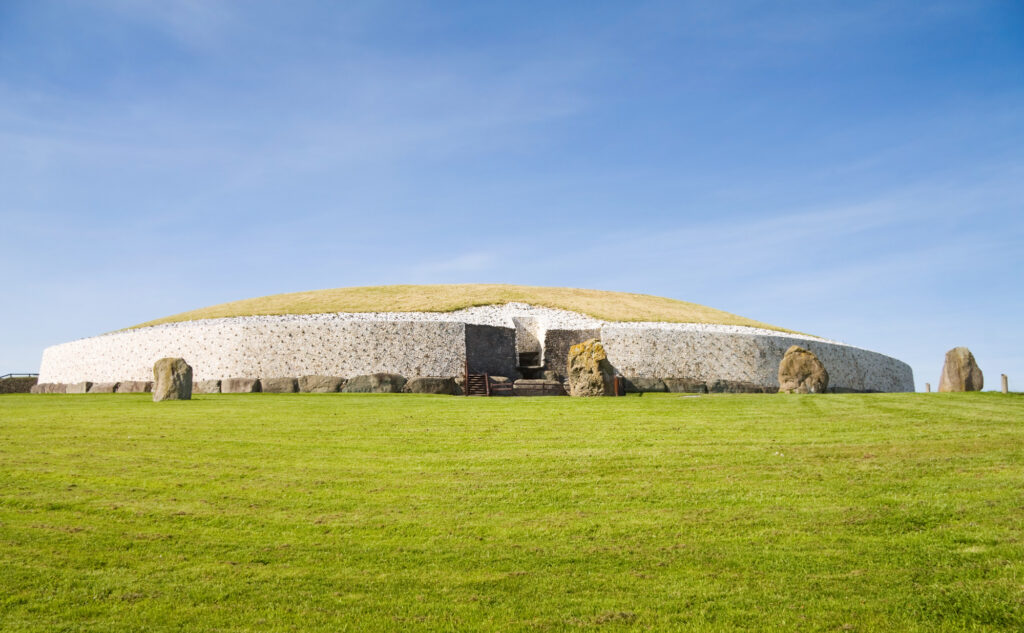
Archaeologists initially classified Newgrange as a passage tomb, but these days it is recognized as a much more important site and more likely a temple of worship. It is a place of great religious and spiritual significance which is abundantly clear when it comes time to celebrate the Winter Solstice.
Knowth and Dowth Tombs
Excavations began in 1962 and revealed that the tomb at Knowth was what is known as a multi-period site. There are 18 smaller tombs surrounding the largest mound, at least two of which are even older than it is. Dowth is the least well-known of the three great tombs of the Boyne Valley. It has not yet been excavated, but initial investigations reveal two passage tombs within the mound.
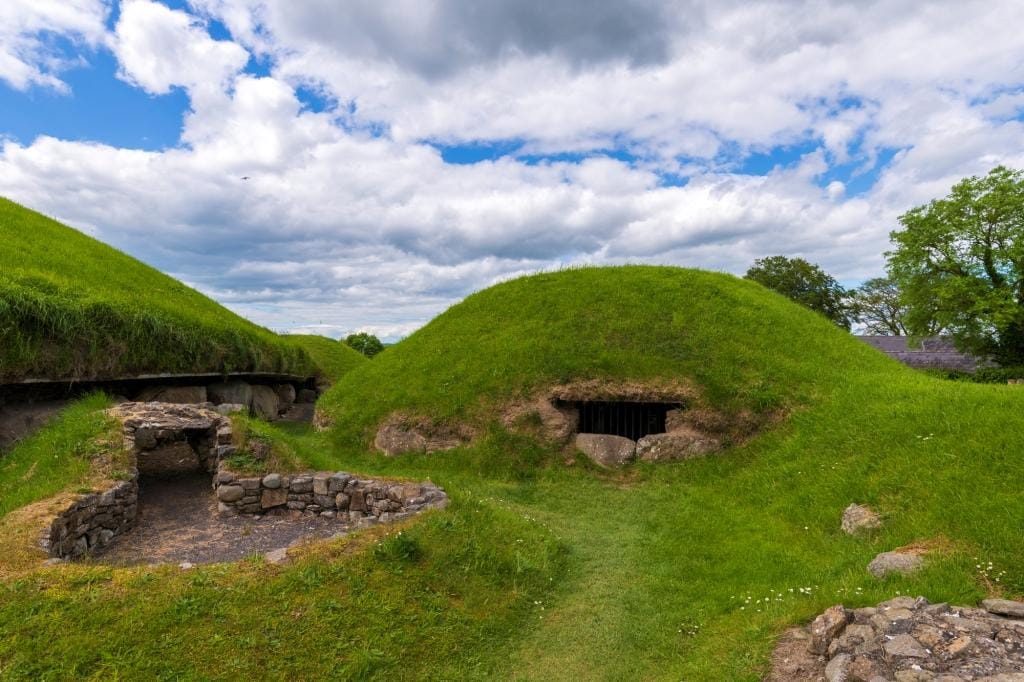
Hill of Tara
One of the most revered and ancient historical sites in Ireland is the Hill of Tara located in County Meath, Ireland’s Ancient East and the Irish seat of the High Kings. It is a huge site that is continually being investigated archaeologically. Tara encompassed the Rath of the Synods, The Mound of the Hostages a Bronze age tomb and the Stone of Destiny or the Lia Fáil. This is one of the top attractions in Ireland and one of its incredible ancient monuments.
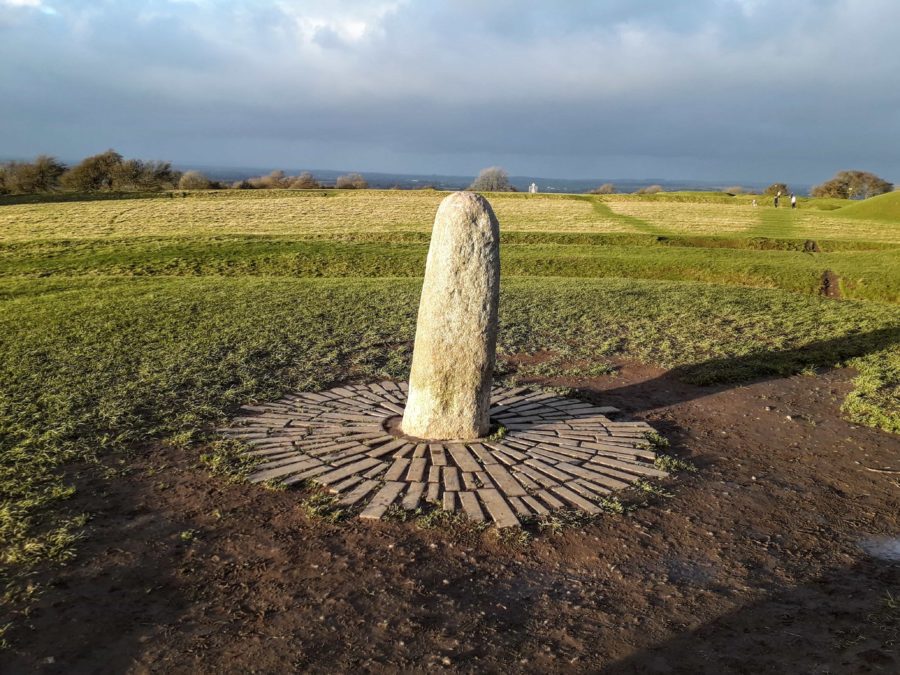
Loughcrew Cairns
The Loughcrew megalithic site encompasses a collection of ancient tombs scattered across the rolling hills. Among these, the renowned ‘Cairn T’ holds utmost significance and welcomes visitors to explore its mysteries. Step inside this rounded tomb and be awed by its hollow interior, adorned with intricate artwork etched onto the stones. What makes this tomb truly captivating is its alignment with the equinox sunrise, much like the renowned Newgrange. Witnessing this celestial alignment adds a profound sense of wonder and connection to the rich history and ancient wisdom preserved within the site.
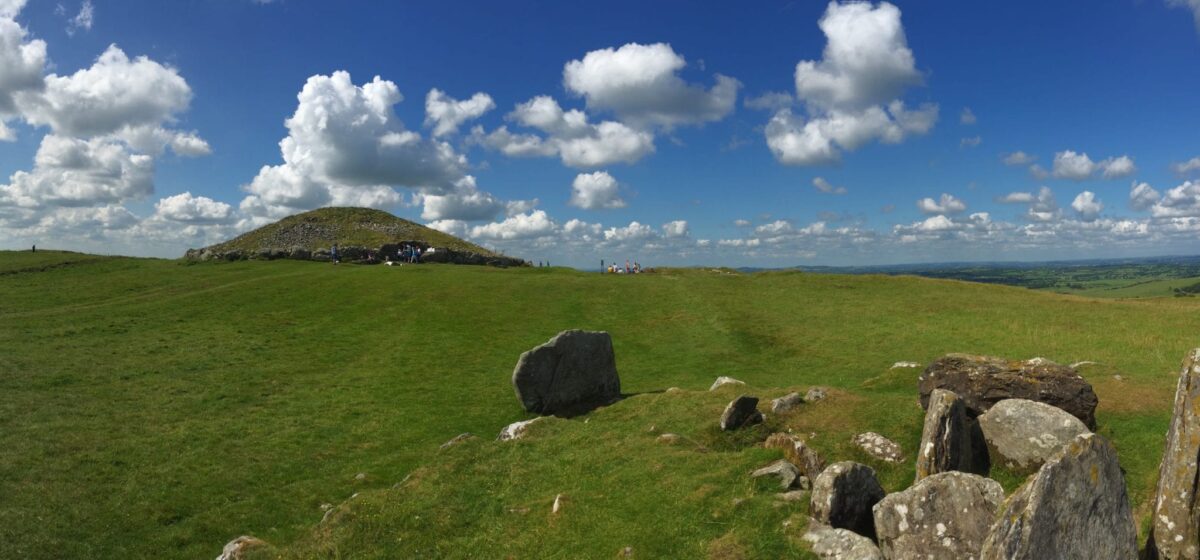
Historic Castles and Abbeys
Dotted throughout the Boyne Valley are remnants of medieval grandeur, showcasing the region’s tumultuous past. Trim Castle, one of Ireland’s largest Norman castles, captivates visitors with its imposing presence and rich architectural detail. Meanwhile, the ruins of Mellifont Abbey, founded in 1142, offer a glimpse into the lives of the Cistercian monks who once resided there. These historic sites provide a window into Ireland’s medieval history and architectural splendor.
Trim Castle
Trim Castle is the largest Norman castle in Ireland and was constructed over a thirty-year period by Hugh de Lacy and his son Walter, Trim Castle is where the movie Brave Heart, Mel Gibson’s Scottish epic was filmed. The castle is open to a guided tour only and takes around an hour and a half.
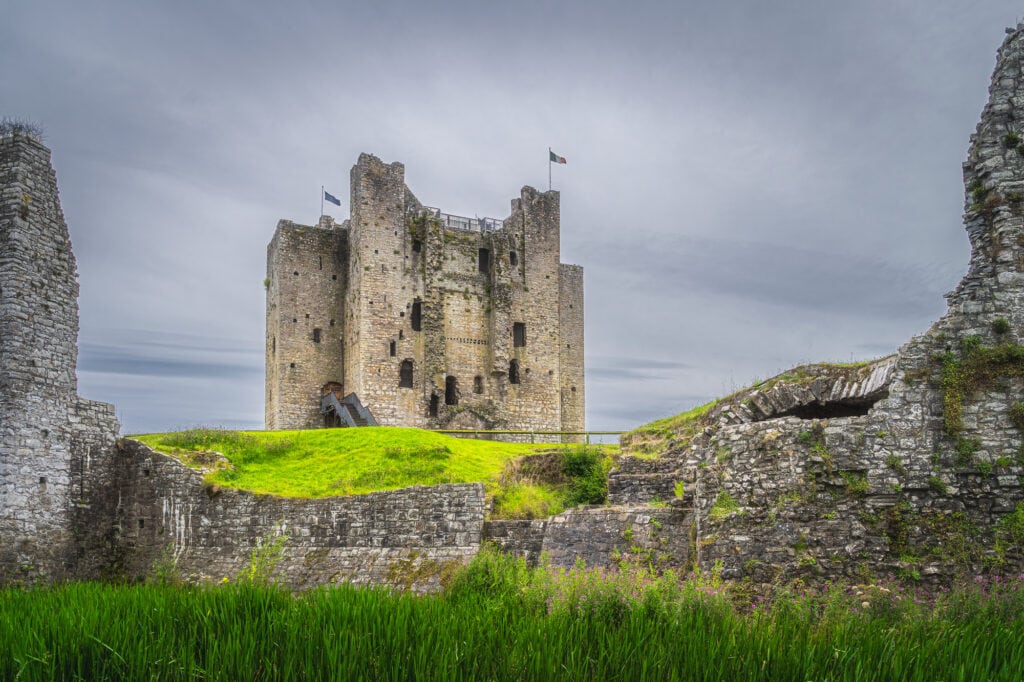
Slane Castle
Slane Castle is set on the grounds of a 1500-acre estate that has been the home of the Conyngham family since the 18th Century. Not only is it the home of the Earl of Mount Charles but it contains a whiskey distillery, a glamping site and hosts some of the world’s premier musicians at its summer concerts.
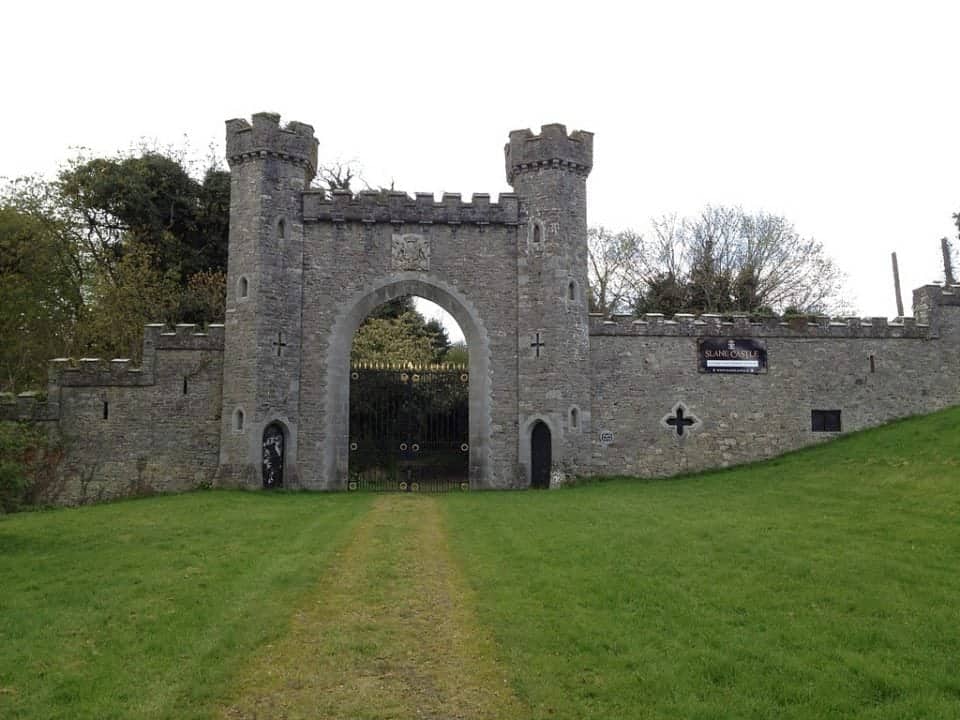
Hill of Slane
The Hill of Slane rise 158m above the surrounding countryside and can be seen from the Hill of Tara, 16km away.
A well-preserved tower is to be found among the ruins of a Franciscan Monastery, dating from 1512, itself built on site of a monastery founded by St. Erc, a follower of St. Patrick.
According to legend, in AD 433, Patrick arrived on the Hill of Slane to challenge pagan beliefs and convert the pagans to Christianity by performing miracles. The key pagan festivals were Imbolg, Bealtaine, Lughnasa, and Samhain, with Bealtaine being particularly important. Fires would be extinguished to mark winter’s end, and a new fire would be lit at dawn on the Hill of Tara to symbolize the new year. Patrick lit a large fire on the Hill of Slane on Easter Eve, known as the Paschal Fire, which burned all night. Captured and taken to King Laoghaire, Patrick performed miracles to prove the power of the Christian God.
Monasterboice
Monasterboice is near Drogheda, and it was founded in the 5th century by St. Bhuithe, one of St. Patrick’s original followers. Today the ruins are known for one of Ireland’s best collections of high crosses, in particular, The South Cross or Cross of Muiredach, the Tall Cross or the West Cross.
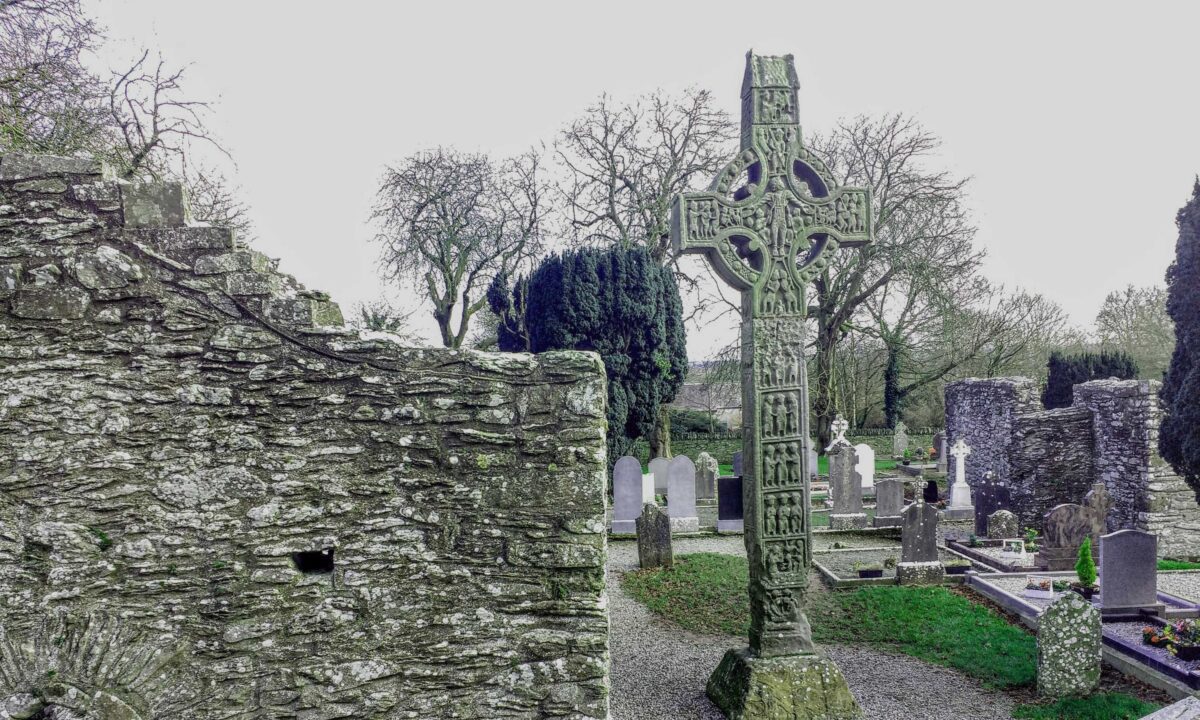
Bective Abbey
Bective Abbey was founded in 1147 for the Cistercian Order by Murchad O’Maeil- Sheachlainn, King of Meath. Following the dissolution, the lands were rented and the monastery was used as a fortified house it was at this time that the tower was built giving the Abbey a much more imposing appearance.
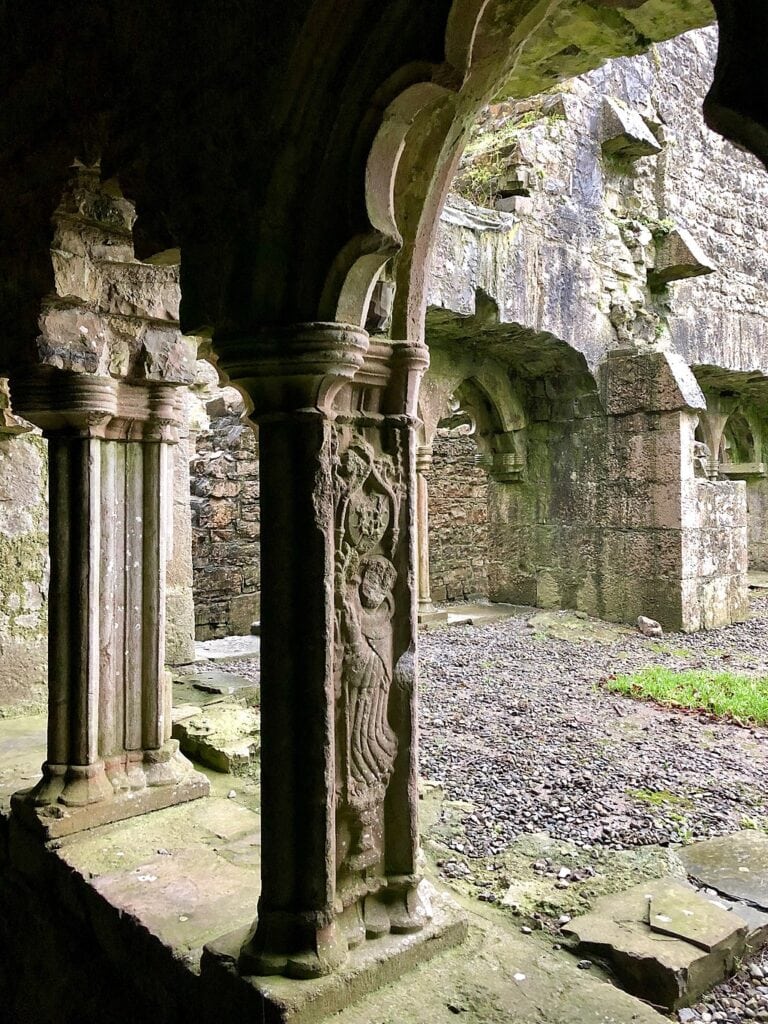
Mellifont Abbey
Mellifont Abbey is a 12th-century Cistercian abbey with an incredible set of ruins that are quite breathtaking. There is an octagonal lavabo which is an ancient washing place for the monks before meals. The arches are quite Romanesque and the carvings really detailed. You can hear the river whispering in the background and if you listen carefully you can just imagine the chanting of monks as they went about their daily routines.
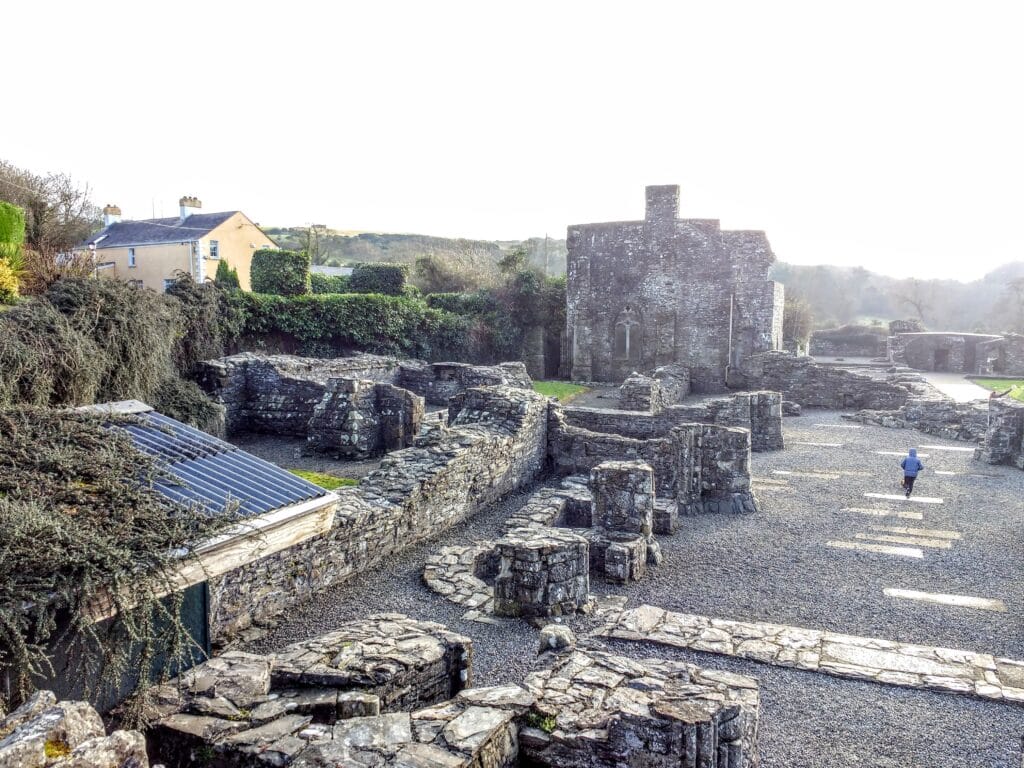
Vibrant Culture and Local Traditions
The Boyne Valley is not just a treasure trove of ancient history but also a thriving hub of Irish culture. Traditional Irish music sessions, charming pubs, and locally sourced cuisine add to the region’s vibrant atmosphere. The nearby town of Drogheda, with its bustling streets and friendly locals, provides a perfect base for immersing oneself in the unique traditions and warm hospitality of the region.
Scenic Beauty and Outdoor Adventures
Beyond its historical sites, the Boyne Valley is blessed with breathtaking natural landscapes. The meandering River Boyne winds its way through lush green valleys and picturesque countryside, offering opportunities for scenic walks, riverside picnics, and even kayaking adventures. Slane Castle Estate, with its stunning parkland and forested trails, provides the perfect setting for outdoor exploration.
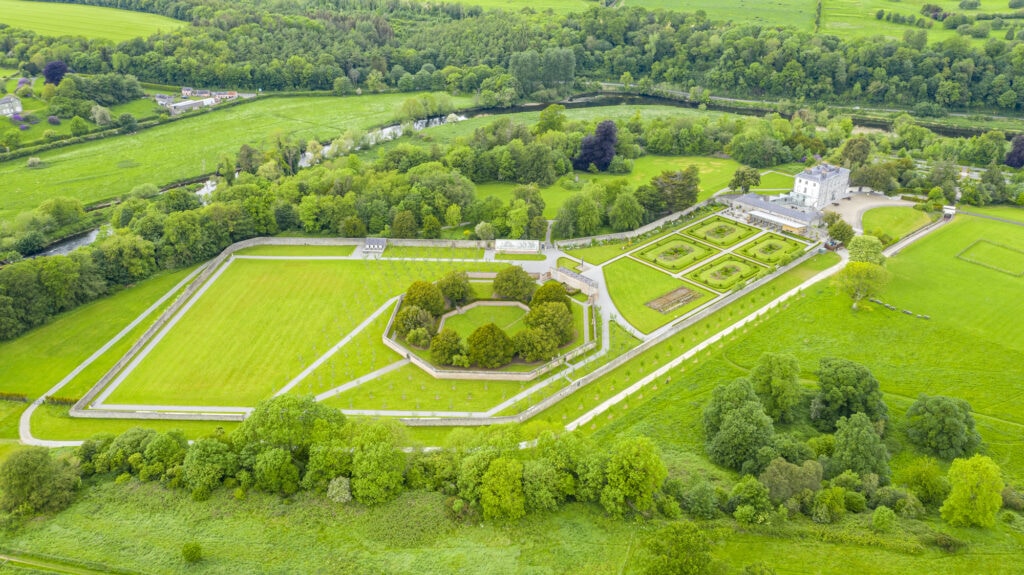
Boyne Valley Sustainable Tourism
As awareness grows about the impact of our carbon footprint on future generations, sustainable tourism practices have taken root in the Boyne Valley. For years, the region has prioritized the preservation of heritage sites and the conservation of its picturesque landscape.
The River Boyne, spanning across a designated Special Area of Conservation covering 90 square kilometers, stands as a testament to this commitment. The river is encompassed by thriving woodland habitats, serving as a sanctuary for diverse wildlife species that are protected and cherished. From the iconic Red Squirrel to the majestic Atlantic Salmon and the elusive River Lamprey, the Boyne Valley is a haven for these precious creatures.
Sonairte
Sonairte, an interactive visitor centre nestled on the banks of the River Nanny near Laytown, is dedicated to fostering ecological awareness and promoting sustainable living practices. Derived from a middle Irish term meaning “positive strength,” Sonairte embodies its name through its commitment to empowering visitors with knowledge and inspiration.
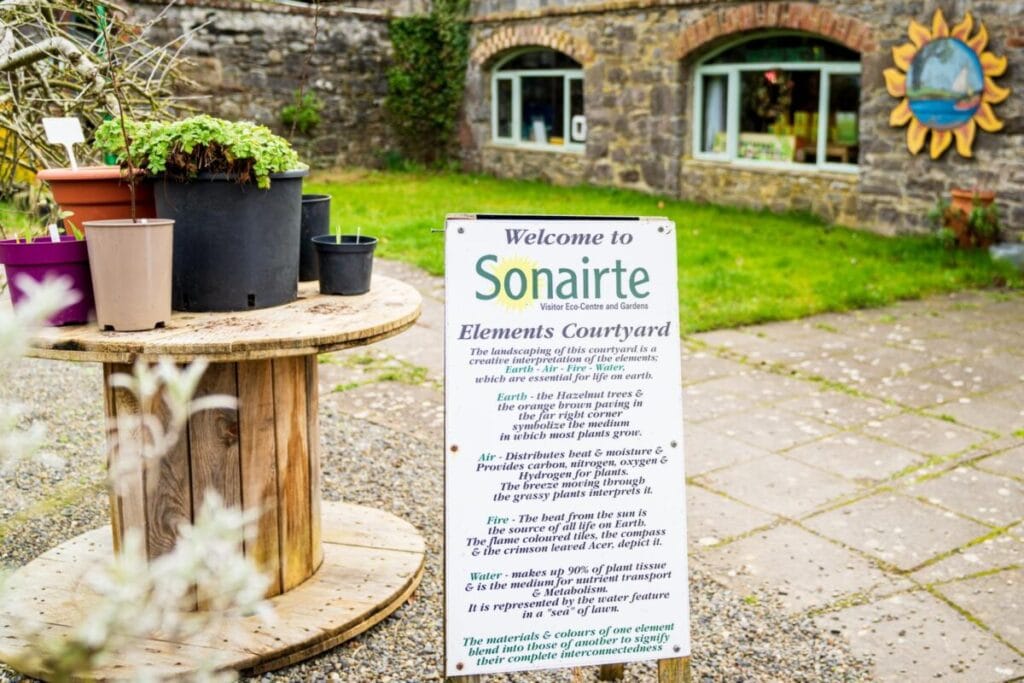
The centre encompasses a farm complex that invites exploration and offers a range of engaging activities. Visitors can embark on a leisurely stroll through the walled Organic Garden and adjacent Nature Trail, where they can relish stunning views of the scenic River Nanny.
Additionally, they can peruse the Eco Shop, which offers a variety of environmentally friendly products, delve into the fascinating world of bees at the Bee Museum, and indulge in delectable meals crafted from wholesome ingredients at the on-site Café. Sonairte provides an immersive and educational experience that encourages visitors to embrace sustainable practices and appreciate the beauty of the natural world.
Boyne Boats
Unwind and embrace a leisurely lifestyle with Boyne Boats as your guide. Prepare to be captivated by the breathtaking beauty of the Boyne River’s scenic gems, while simultaneously immersing yourself in the rich tapestry of historical landmarks and captivating legends.
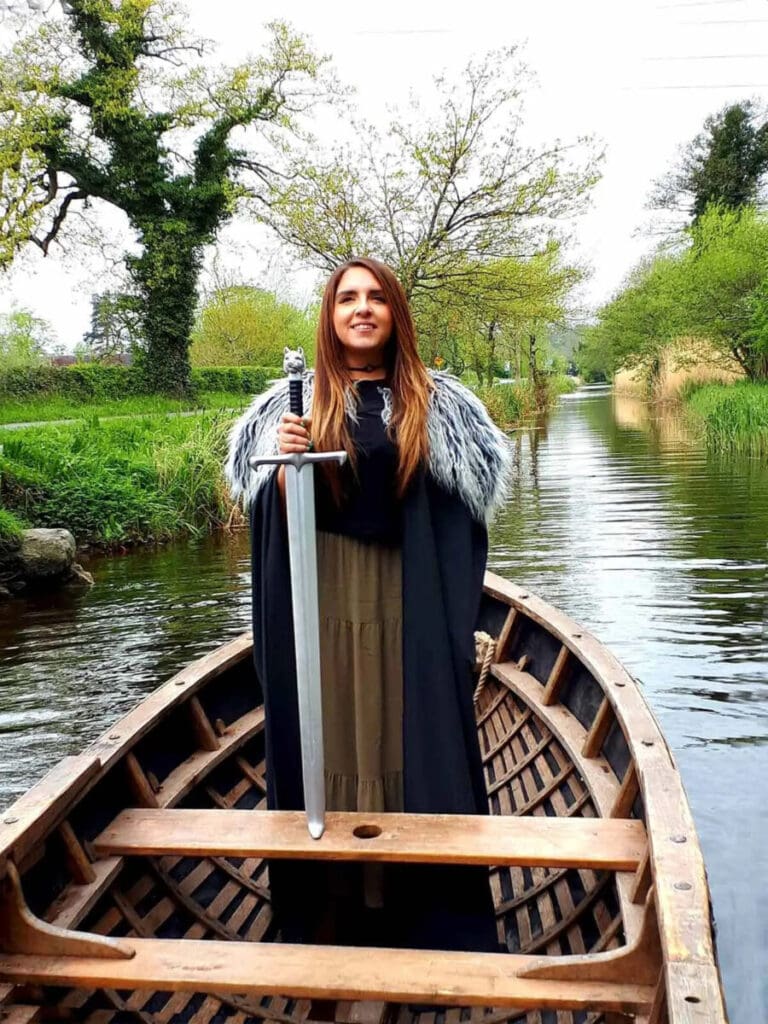
Delve into the enchanting tale of Boann, the Celtic queen and goddess, as you glide along the river’s gentle currents. Each experience with Boyne Boats takes place aboard a meticulously handcrafted currach, personally crafted by Ross Kenny, the visionary founder behind these remarkable vessels, which have even made appearances in the renowned series Game of Thrones.
Where to stay in the Boyne Valley
Rock Farm
Welcome to Rock Farm, a hidden gem nestled within the historic Slane Castle Estate. Immerse yourself in the beauty of nature while enjoying a stay in our eco-friendly accommodations. Choose from our straw-bale eco lodges, where you can experience the comfort and charm of the Cosy Swallow’s Nest lodge, perfect for two people, or indulge in the spacious and luxurious Lime House. As the largest straw-bale residential house in Ireland, the Lime House offers six ensuite bedrooms and ample living space, ensuring a delightful and eco-conscious stay.
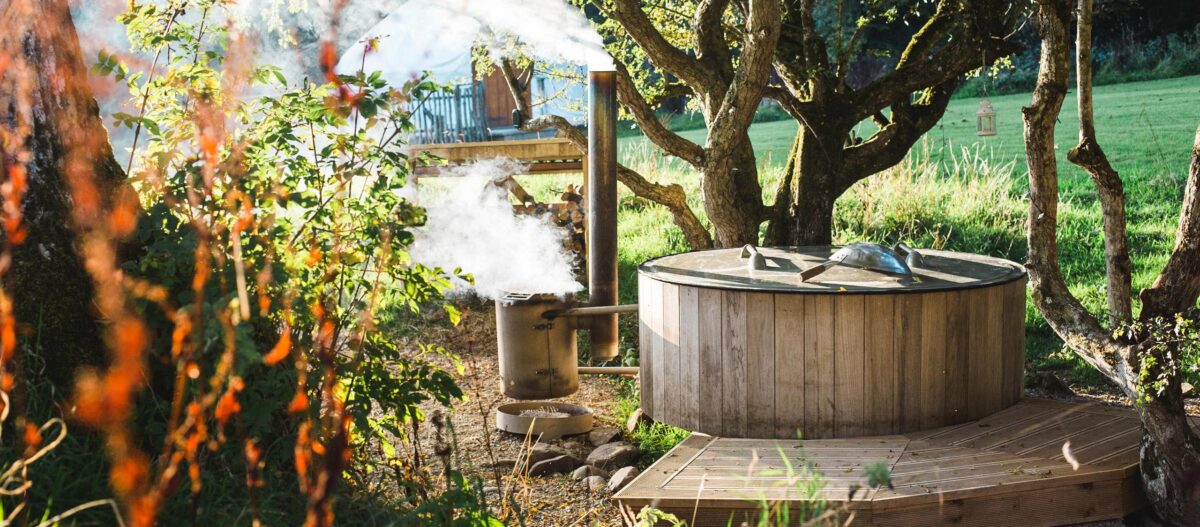
Boyne Valley Glamping
If you’re seeking a closer connection with nature during your eco-trip to the Boyne Valley, Boyne Valley Glamping is an excellent choice. Experience the joys of glamping with our four options designed for couples, families, or groups. Our commitment to sustainability extends to eco-friendly toilets and showers, reducing our carbon footprint while providing comfort and convenience for our guests.
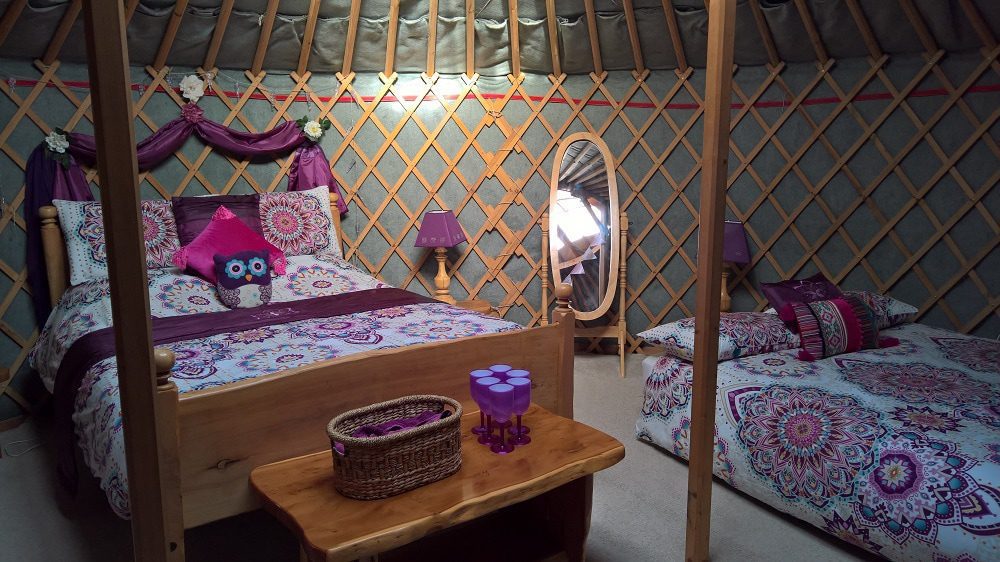
Whether you choose to stay at Rock Farm or Boyne Valley Glamping, you’ll be surrounded by the tranquility of nature, with the opportunity to explore the beautiful Boyne Valley and embrace sustainable living.
Trim Castle Hotel
This Trim Castle hotel overlooks Trim Castle, which was used, among other things, as a filming location for the film Braveheart. It offers spacious rooms with free Wi-Fi. Trim Castle is the largest Anglo-Norman castle in Ireland. The Trim Hotel has been designed to blend in with this historic setting while providing excellent service and modern amenities. The luxurious rooms at the Trim Castle Hotel have large windows and overlook the castle and its surroundings. They include a flat-screen TV and some have a balcony.
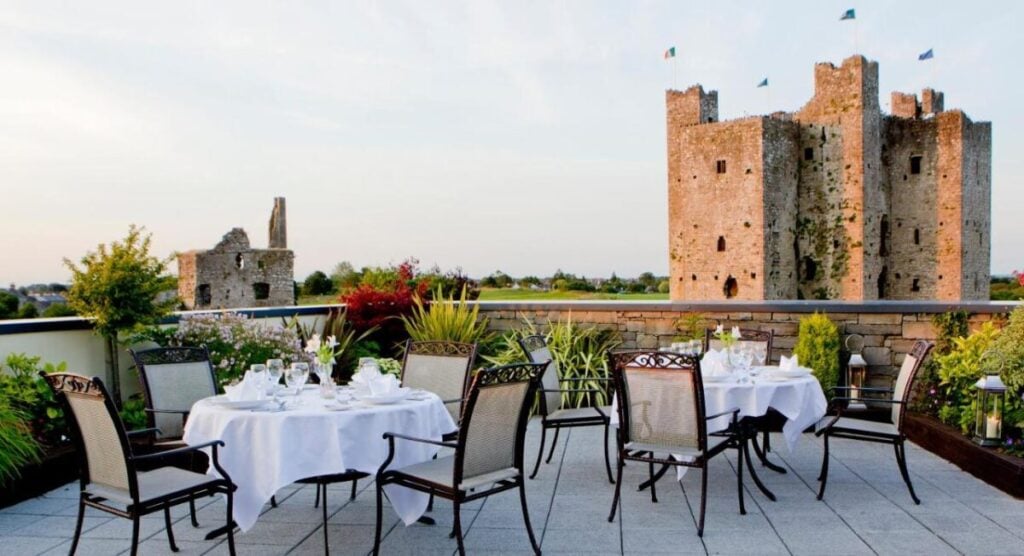
Connells House thatched Cottage
Connells House Thatched Cottage is set in Duleek and offers a restaurant and a garden. The accommodation is 30 km from Swords. The cottage has 4 bedrooms, a flat-screen TV, an equipped kitchen with a dishwasher and a microwave, a washing machine, and 3 bathrooms with a shower. Dublin is 42 km from the holiday home, while Slane is 15 km from the property.
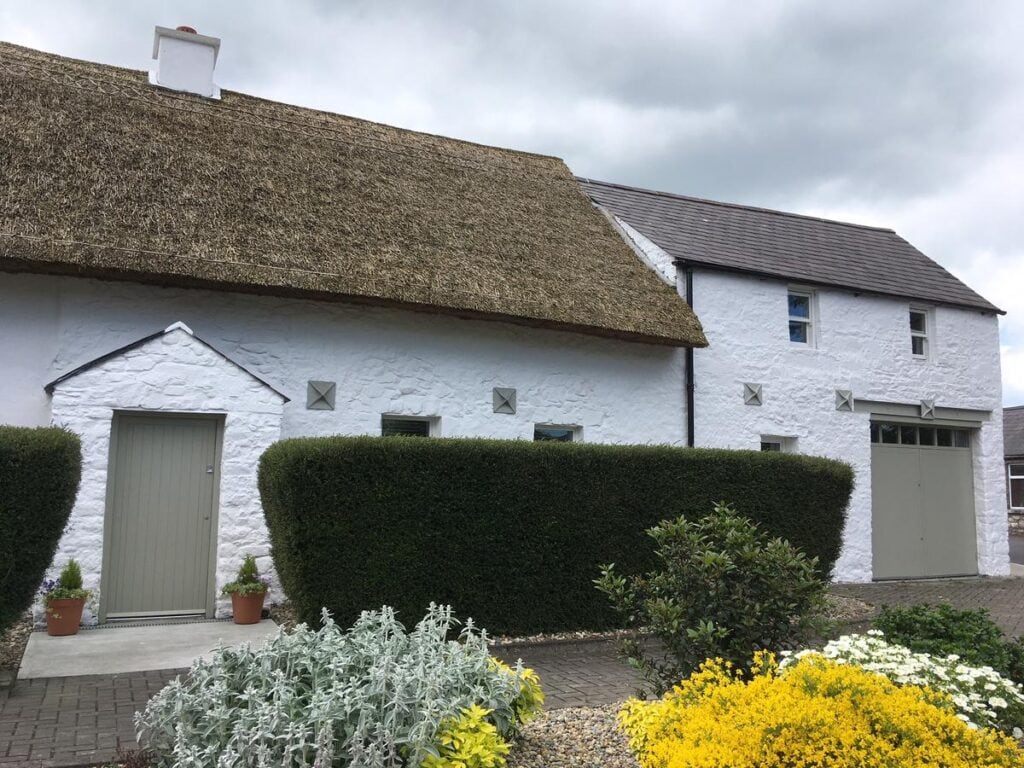
Food and drink in the Boyne Valley
Slane Distillery
They turned a 250-year-old stable into one of Ireland’s most pioneering distilleries. The whiskey distillery provides tours and tasting sessions where you can learn about the history of whiskey in this fabulous setting.
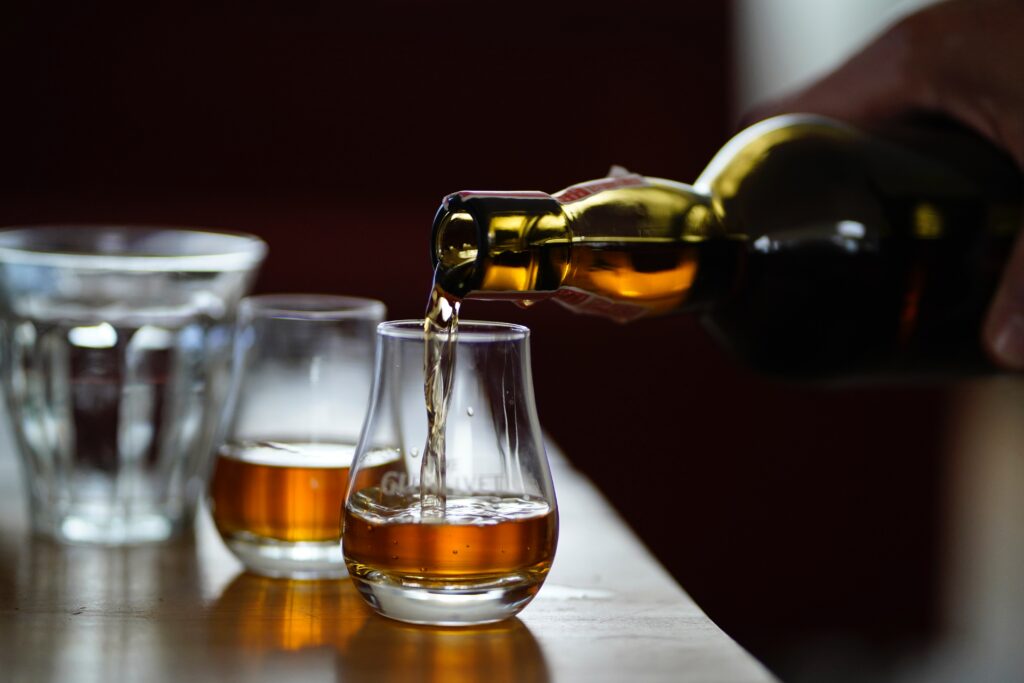
The Boyne Valley in Ireland is known for its rich culinary heritage, and there are several outstanding restaurants in the region that offer exceptional dining experiences. Here are a few of the best restaurants in the Boyne Valley:
Brabazon Restaurant at Tankardstown House (Slane, County Meath): Situated within the elegant Tankardstown House, the Brabazon Restaurant offers a fine dining experience with a focus on seasonal and locally sourced ingredients. The menu features creative dishes that showcase the best of Irish cuisine, accompanied by an extensive selection of wines. The elegant surroundings and attentive service make it a perfect choice for a special occasion.
The Central (Navan, County Meath): Located in the heart of Navan, The Central is a popular restaurant that offers a diverse menu of modern Irish cuisine. With a focus on using locally sourced ingredients, their dishes are prepared with flair and creativity. The cozy and welcoming atmosphere, along with friendly service, creates a delightful dining experience.
Eastern Seaboard Bar & Grill (Drogheda, County Louth): Situated in the vibrant town of Drogheda, Eastern Seaboard Bar & Grill is renowned for its exceptional seafood and grilled meat dishes. The menu showcases a fusion of Irish and international flavors, prepared with the finest locally sourced ingredients. The stylish and relaxed atmosphere, combined with their commitment to high-quality food, has made it a favorite among locals and visitors alike.
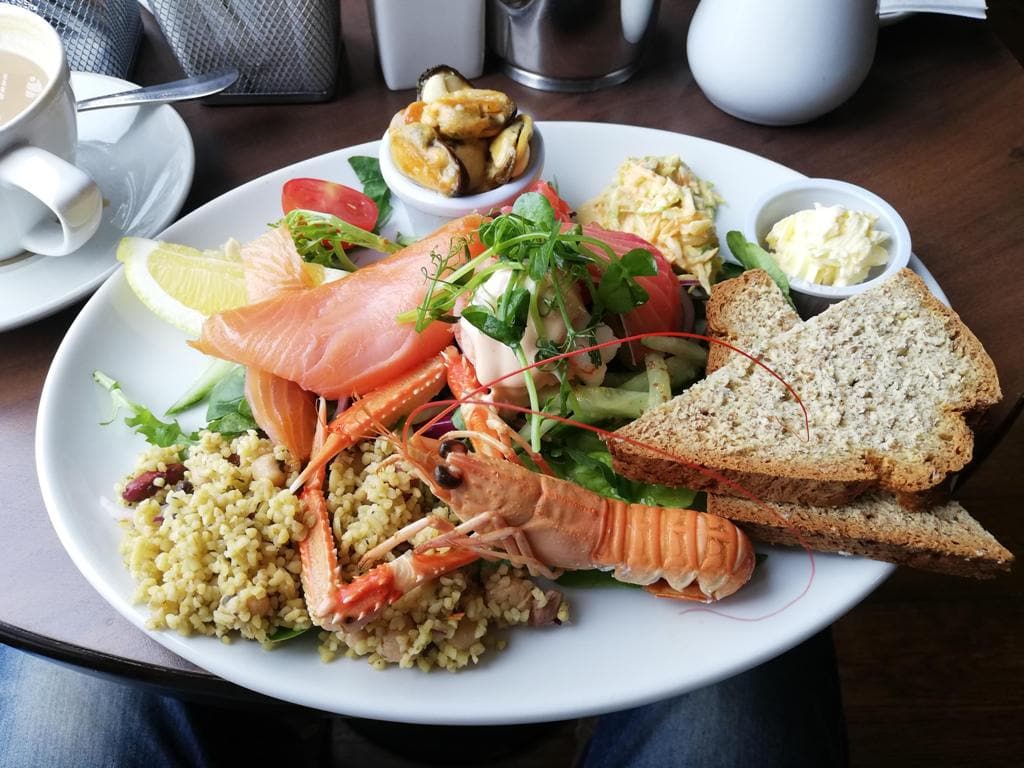
The Lime Kiln (Julianstown, County Meath): Set in a beautifully restored 19th-century building, The Lime Kiln is a charming gastropub that offers a warm and inviting atmosphere. The menu features a range of traditional Irish dishes, including delicious steaks, seafood, and hearty pub classics. With its cozy interior and friendly staff, it’s an excellent choice for a casual and satisfying meal.
A visit to the Boyne Valley is a journey through Ireland’s captivating past, where history and myth intertwine and have become Ireland’s Ancient East. From the ancient wonder of Brú na Bóinne to the echoes of the Battle of the Boyne, and the timeless beauty of the Irish landscapes.
